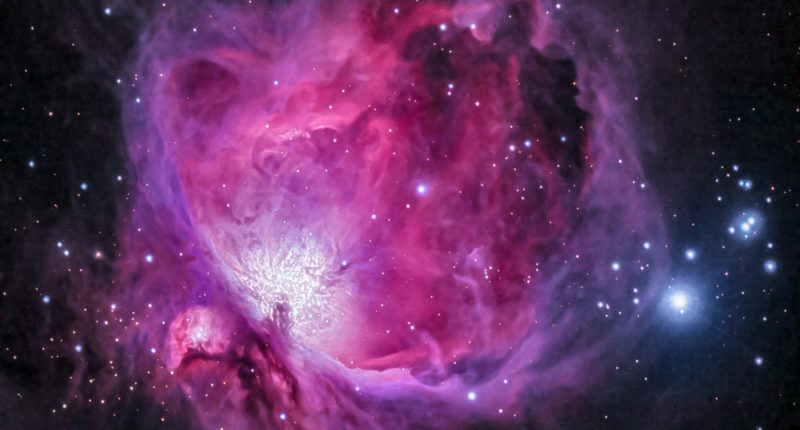The James Webb Space Telescope launched in December of 2021 and intends to succeed the famous Hubble Space Telescope. Its revolutionary technology avoids measuring visible light and focuses largely on the infrared spectrum: a completely new approach with many advantages.
In contrast, the Hubble Space Telescope was designed to process visible and ultraviolet light. With the purpose of conserving space, the main camera exclusively captures black and white imagery. By applying a filter, researchers can isolate a certain color to be represented by the resulting grayscale photograph.
A red filter will measure red light; blue filter, blue light; green filter, green light. These are the additive primary colors and can be combined to create any other hue. Cycling these filters in rapid succession and compiling the three images, the telescope is able to construct an image of space very similar to what a human would perceive.
Human eyes work in a very comparable way to the Hubble Space Telescope. When light hits the retina on the back of our eyes, it meets a plethora of rod and cone cells. The rods support grayscale sight for low light applications and the cones act as color receptors. Much like the telescope’s colored filters, one type of cone cell exists for red light, one for blue, and one for green. The brain incorporates these separate signals into what we call vision.
The telescope strives to produce many ‘true-color’ images: depictions that match what a human observer would see. It replicates our biological process of determining color in search of accuracy.
Although, it is often in our best interests to pursue ‘false-color’ images, or those that do not accurately reflect our natural perception. Nebulae are a prime example of this. Emission nebulae typically shine a uniformly red color because they are full of hydrogen. With false-color imagery, we can peek through the barrier of hydrogen gas and assign different colors to parts of the nebula with significant material differences.
The Hubble Space Telescope houses technology that can further analyze the slight aberrations in red light and determine chemical composition of far away galaxies. This can be accentuated in the final image to bestow it with more meaning. This is why most pictures of nebulae that one might see online are diverse in color.
Additionally, a vast amount of information present in the oncoming light cannot be seen by a human eye in the first place. The Hubble Space Telescope is also equipped with ultraviolet light processing technology. This light isn’t visible to humans and wouldn’t be a part of any true-color photography, but by assigning it an arbitrary range of colors, it can still be represented in false-color images.
This technique is particularly powerful and employed heavily by the James Webb Space Telescope. Focusing on infrared waves, this new technology is able to gather much more information about space; infrared light can’t be seen by humans, so false-color imaging is incredibly important when it comes to visualizing any data collected by the new telescope.
While ultraviolet light has shorter wavelengths than visible light, infrared has longer wavelengths than both. The Hubble Space Telescope specializes in wavelengths ranging from 0.1 to 0.8 micrometers, though it can process some infrared light closely bordering the visible spectrum. The James Webb Space Telescope can capture light up to 28.5 micrometers in wavelength. In fact, it does not have the capability to see light with smaller wavelengths than the color gold at 0.6 micrometers; it can only see some yellows, oranges and reds, but no cool colors.
The ability to see infrared light is the James Webb Space Telescope’s greatest triumph over the Hubble Space Telescope. It actually gives researchers more information about the universe than normal visible light.
When we look at the stars we are seeing an afterimage of the past. Since they are so far away, it takes time for light emitted from them or reflected off of them to reach our gaze. Even the moon is an image from the past from approximately 1.3 seconds ago.
The same principle applies to even galaxies. Some galaxies are so distant that their image distorts before it is able to reach Earth. When the galaxies originally formed, they emitted light. This light has been traveling for billions of years. Because space expands, this light is slowly stretched over time, moving it from its original position in the visible spectrum to the infrared spectrum with greater wavelengths.
Specialized in the infrared spectrum, the James Webb Space Telescope is able to process these ancient patterns of light and gain new information about the universe’s origin. It can look much further back in time than the Hubble Space Telescope ever could.
This is why the James Webb Space Telescope is so revolutionary: we will be able to view stars and galaxies from essentially the beginning of the universe.










Comments are closed.